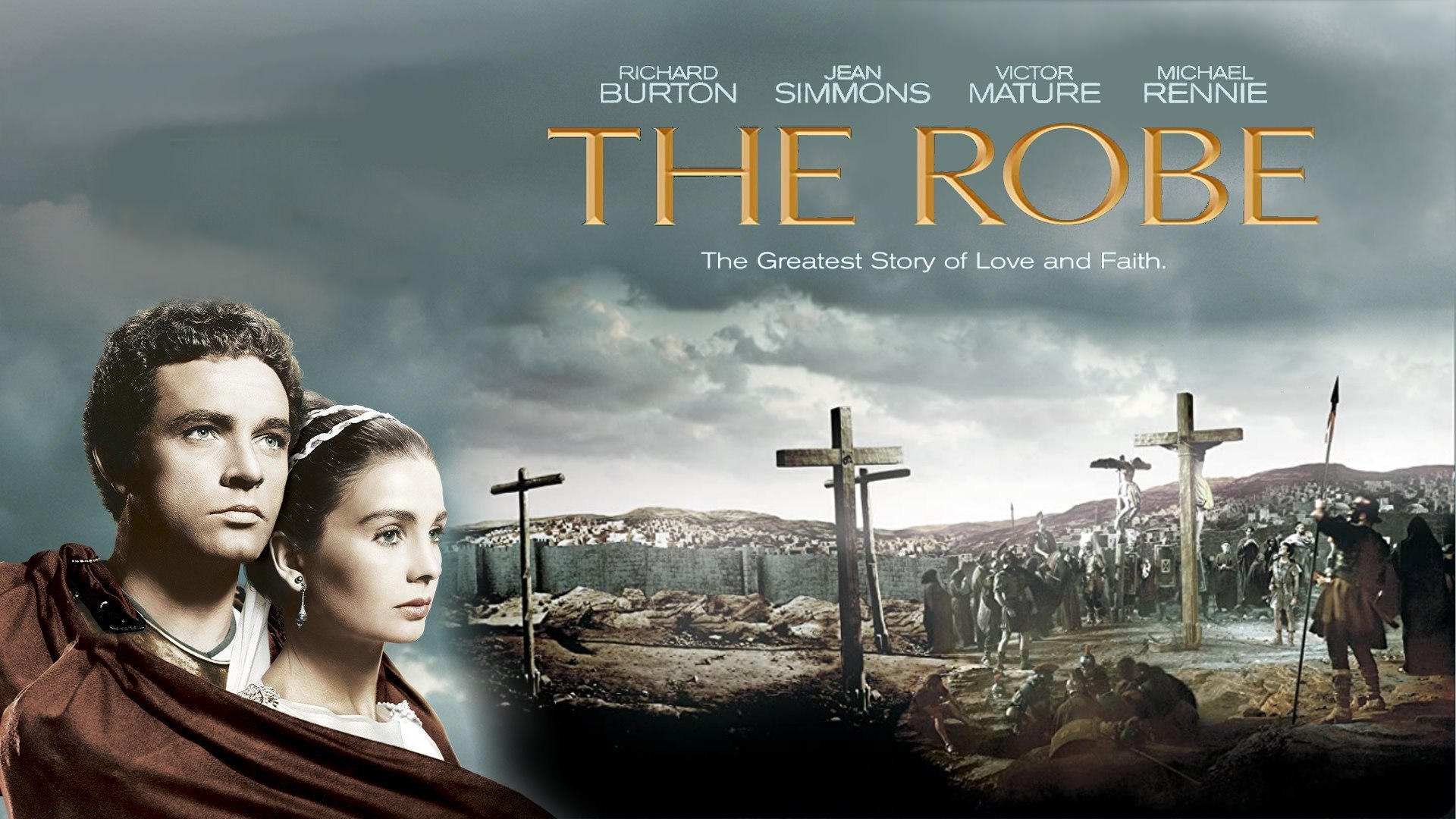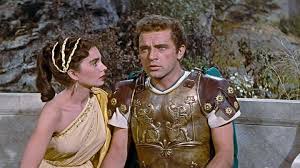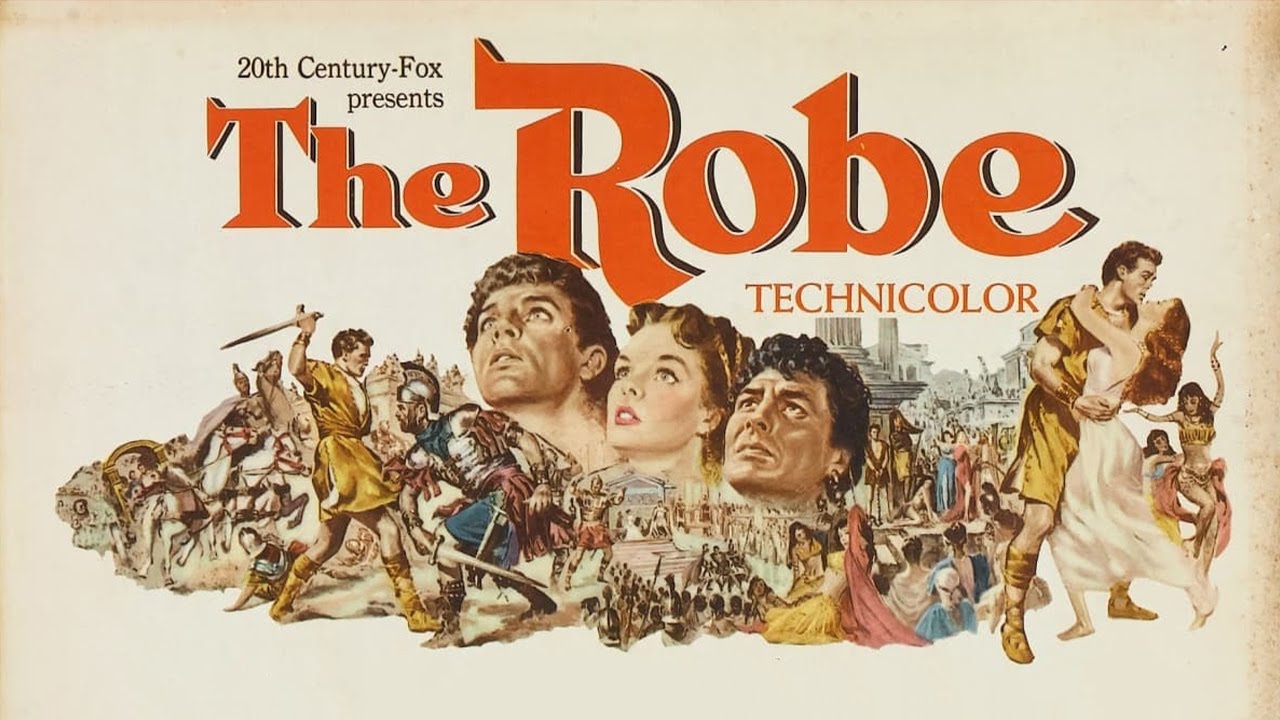🎬 The Robe (1953)

The Robe (1953) – A Profound Journey of Faith and Transformation
The Robe (1953) stands as a monumental classic in the genre of biblical epic cinema, delivering a powerful and deeply moving story centered on a Roman tribune’s transformative journey through faith. Directed by Henry Koster, this film explores the profound spiritual awakening of Marcellus Gallio, a Roman officer who wins the robe of Jesus Christ after the crucifixion, an event that sets him on a path of inner conflict, doubt, and ultimately redemption.
Plot Overview
The film begins during the final moments of Jesus Christ’s crucifixion, where Marcellus Gallio (played by Richard Burton) is among the Roman soldiers overseeing the execution. Following the death of Christ, Marcellus wins the sacred robe of Jesus in a dice game—a symbolic garment representing divine authority and sacrifice.
Initially, Marcellus views the robe merely as a spoil of war, a trophy representing his victory and power within the Roman Empire. However, as the narrative unfolds, his encounter with the early Christian community and their teachings challenges his worldview and shakes his understanding of power, loyalty, and life itself.
Haunted by visions and the inexplicable influence of the robe, Marcellus embarks on an internal struggle that forces him to confront his doubts and fears. Through his interactions with the followers of Christ, including a devoted Christian woman named Diana (played by Jean Simmons), Marcellus’s hardened heart begins to soften. The robe becomes a catalyst for his spiritual rebirth and transformation from skeptic to believer.
Themes and Religious Significance
At its core, The Robe is a film about the clash between the secular authority of Rome and the transcendent power of faith in Christ. It masterfully portrays the tension between worldly ambition and spiritual awakening, highlighting the redemptive power of love, sacrifice, and forgiveness.
The robe itself symbolizes more than just a piece of clothing—it embodies the presence and sacrifice of Jesus Christ, whose suffering and resurrection offer salvation to humanity. Marcellus’s journey from doubt to faith reflects the transformative potential of encountering divine truth, a message central to Christian doctrine.
The film also emphasizes themes of grace and repentance, illustrating how even those who once persecuted the followers of Christ can find forgiveness and renewal. This narrative resonates deeply with Christian audiences, reminding viewers of the universal invitation to redemption.
Cinematic Achievement and Production
The Robe is historically significant as the first film released in CinemaScope, a widescreen format that revolutionized cinematic presentation. This technological innovation allowed for grand, sweeping visuals that enhanced the epic nature of the story.
The film’s production design is lavish and authentic, with detailed sets and costumes that recreate the grandeur of ancient Rome and the early Christian era. The use of dramatic lighting and cinematography further immerses viewers in the emotional and spiritual intensity of Marcellus’s transformation.
Richard Burton delivers a compelling performance as Marcellus, capturing the character’s internal conflict and gradual embrace of faith with nuance and depth. Jean Simmons’s portrayal of Diana adds emotional warmth and serves as a grounding influence on Marcellus’s journey.
Impact and Legacy
The Robe remains a landmark in biblical cinema, inspiring countless viewers with its profound exploration of faith and redemption. Its influence extends beyond entertainment, serving as a powerful visual sermon on the enduring message of Christianity.
For many, the film serves as a reminder of the personal struggles and doubts that accompany spiritual growth. Marcellus’s story encourages believers to remain open to transformation and to trust in the power of grace.
The film’s timeless appeal lies in its ability to connect historical events with contemporary spiritual questions, making the ancient story of Christ’s sacrifice relevant to modern audiences.
Conclusion
In conclusion, The Robe (1953) is much more than a historical epic—it is a deeply spiritual journey that invites viewers to reflect on the meaning of faith, sacrifice, and redemption. Through Marcellus Gallio’s transformation, the film illustrates the profound impact that encountering Christ can have on a person’s life.
Its pioneering use of CinemaScope, combined with powerful performances and a resonant narrative, ensures its place as a classic that continues to inspire and uplift. The Robe is essential viewing for anyone seeking to understand the power of faith and the enduring legacy of Christianity.











